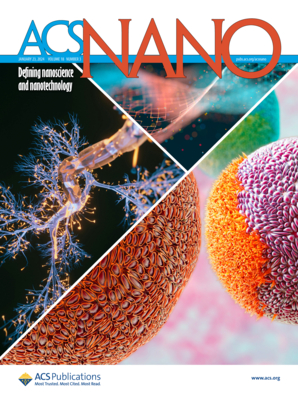Room-Temperature Efficient Single-Photon Generation from CdSe/ZnS Nanoplatelets
IF 15.8
1区 材料科学
Q1 CHEMISTRY, MULTIDISCIPLINARY
引用次数: 0
Abstract
In the search for materials for quantum information science applications, colloidal semiconductor nanoplatelets (NPLs) have emerged as a highly promising class of materials due to their interesting optical properties, such as narrow emission line widths and fast photoluminescence (PL) lifetimes at room temperature. So far, only a few works focused on the quantum properties of their emission; however, NPLs, with their atomic-scale thickness and one-dimensional quantum confinement, are promising candidates for single-photon sources. Here, we demonstrate room-temperature single-photon emission from core/shell CdSe/ZnS NPLs, which feature an 8 × 20 nm2 surface area and 1 nm shell. The limited surface area ensures effective Auger nonradiative recombination, resulting in highly efficient single-photon generation with values of photon purity as low as g(2)(0) = 0.04. The observed long-period blinking and bleaching typical of such thin shells can be easily reduced by increasing the shell thickness. This work establishes NPLs as single-photon sources that are very well suited for integration into quantum photonic systems.

求助全文
约1分钟内获得全文
求助全文
来源期刊

ACS Nano
工程技术-材料科学:综合
CiteScore
26.00
自引率
4.10%
发文量
1627
审稿时长
1.7 months
期刊介绍:
ACS Nano, published monthly, serves as an international forum for comprehensive articles on nanoscience and nanotechnology research at the intersections of chemistry, biology, materials science, physics, and engineering. The journal fosters communication among scientists in these communities, facilitating collaboration, new research opportunities, and advancements through discoveries. ACS Nano covers synthesis, assembly, characterization, theory, and simulation of nanostructures, nanobiotechnology, nanofabrication, methods and tools for nanoscience and nanotechnology, and self- and directed-assembly. Alongside original research articles, it offers thorough reviews, perspectives on cutting-edge research, and discussions envisioning the future of nanoscience and nanotechnology.
 求助内容:
求助内容: 应助结果提醒方式:
应助结果提醒方式:


